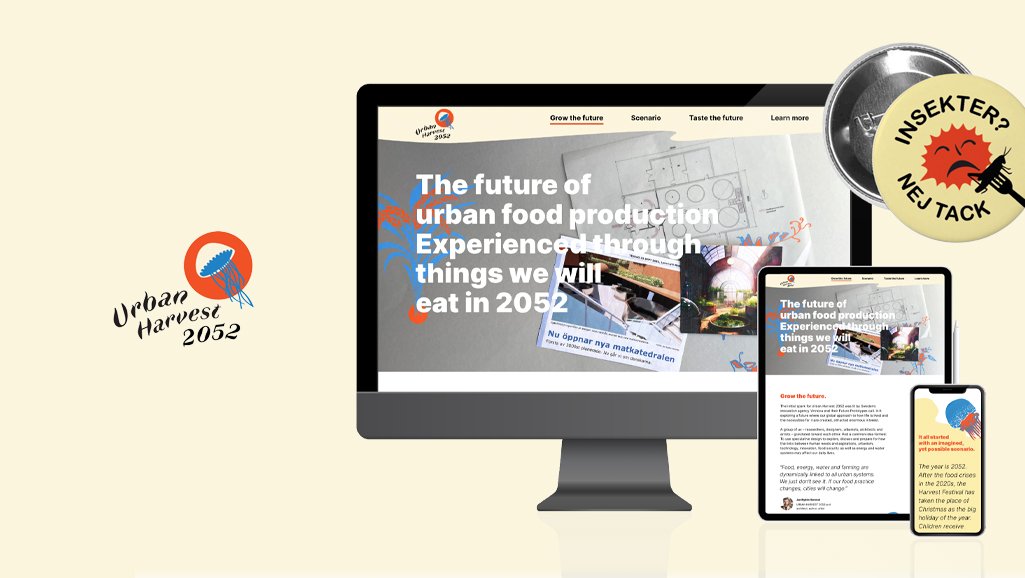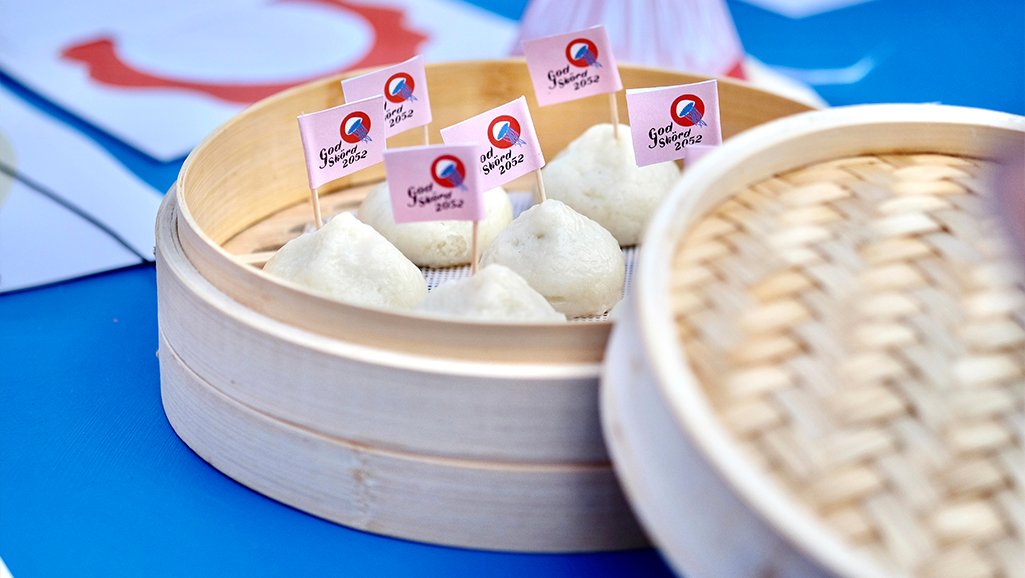Client
Stockholm Stad & Vinnova
Services
Research / Data analysis / Prototype and design development / Production / Workshop facilitation and documentation in video format / Exhibition production / Promotional materials
Year
2022
Design agency
Manyone
Through future scenarios and tangible artefacts we successfully sparked dialogue around urban food production. The project team of experts, designers, urbanists, strategists, artists and authors created tangible artefacts that were presented at a fictive harvest festival, set in the year 2052.
The year is 2052. After the food crises in the 2020s, the Harvest Festival has taken over the place of Christmas as the big holiday of the year. The children get presents. Special decorations and ornaments are common. The test bed Norra Djurgårdsstaden has become a self-sufficient district: Norra Matgårdsstaden.
Visit the project site here!
What was the purpose of a speculative design project?
We use the three tomorrows as a tool and a conceptual framework to push the boundaries of what we imagine with the context of urban food production.

The Familiar Futures extend current trends and technologies logically into the future. The Extended Presents specifically emphasise the temporal continuity and ongoing evolution of the present state. There’s a nuanced exploration of how current conditions might extend into the future, considering subtle shifts and ongoing developments. While the Unimagined involves scenarios that defy current expectations and challenge conventional thinking. The Unimagined envisions futures that are not easily foreseeable based on existing knowledge. It encourages contemplating radical shifts, breakthroughs, or unforeseen developments that could significantly alter the course of events.
Food as a lens
This is a story told through food. What does the future taste like? What grows in the city? Through preparing provocation artefacts, organising two workshops and a Urban Harvest Festival event, we collected knowledge and opinions and eventually aim to spark dialogue.

The scenarios
Together with us as designers, architect and the Stockholm Stad, we came up a scenario in 30 years depicting the scene of urban food production.
The year is 2052. After the food crises in the 2020s, the Harvest Festival has taken over the place of Christmas as the big holiday of the year. The children get presents. Special decorations and ornaments are common. The test bed Norra Djurgårdsstaden has become a self-sufficient district: Norra Matgårdsstaden. Cultivation areas are found on facades, on roofs, in basements, in rock chambers, on rafts and underwater. In addition to food, climate-positive building materials are grown: industrial hemp, seaweed, mushroom mycelium. Food production is revered and takes place mostly industrially in cathedral-like factories. The district has its own VEN system (Water, Energy, Nutrients) which sorts the wastewater at source and extracts heat, biogas and nutrients that replace fertiliser. Local initiatives provide resilience. The right of public access, an urban right of public access, prevails. Food soil is hard currency, both here and globally. Segregation between new and old districts is a problem. Welcome to Norra Matgårdsstaden 2052.
Designing the future with the experts, food creatives, the industry representatives, and the citizens
We organised workshops with key stakeholders from various fields to explore ecosystem services and the role of renewable resources like solar and wind energy in enhancing urban life quality and security. Discussions focused on how these changes might affect grocery shopping, eating habits, and citizen involvement in urban food production. Experts, including crop specialists and chefs, shared insights on potential urban agriculture and food experiences for a future, largely self-sufficient Stockholm. These dialogues aimed to shape early visualisations and provoke ideas about future foods for a fictive harvest festival.
SKÖRDEFEST! Urban Harvest Fest: Project showcase and dialogue
In October 2022, we threw an Urban Harvest Festival. The year has switched to 2052. At our future harvest festival, we offered dishes from the raw materials grown in the fictional district. Here can be discussions about what is possible to produce in a possible future? How will it affect us who live here flourish?
The harvest festival is lined with decorations of various kinds. The decorations that are produced symbolising this new / old feast, the annual harvest festival of the future and to spark dialogue.
A lot can happen in 30 years time! What if a few provocations to trigger your imagination?
We created a fictive timeline that we used throughout the project. It reflects project insights and provocations.

Life in the city: Food production happens everywhere. Many citizens choose to be directly involved by collecting, producing and refining foods. Some condominium associations rent out their facades as vertical farm land and others contribute by farming the city’s strategic green areas and forest gardens.
Infrastructure: In a referendum the Swedish population vote to ban insects as a source of protein. This paved the way for other investments to make urban food production a reality. Favouring farming techniques for both above and under the surface of the sea, on roof tops, on buildings and in caves.
Crops: We enjoy a variety of edible microorganisms (fungi) since they are a good source of nutrition, take little space when grown and are unaffected by the notorious extreme weather, that is known to ruin harvests, since they are grown in caves and basements.
In 2052 the Urban Harvest Festival has become as important as Christmas.
The tangibles.
The Harvest Festival acted as the umbrella to showcase a series of artefacts, each helping to tell a story of a fictive future where urban food production is implemented at large. They are the future harvest snack, the pavilion, and the festival programme.
The future is NOW!
We ended up creating four harvest festival snacks. Each snack highlights one (or several) aspects of urban food production 30 years from now. They are designed based on research on what might be grown amid the client change in Sweden. For example, locally grown tropical fruits such as bananas, low-arsenic and high-protein rice, and invasive jellyfish from the west coast!
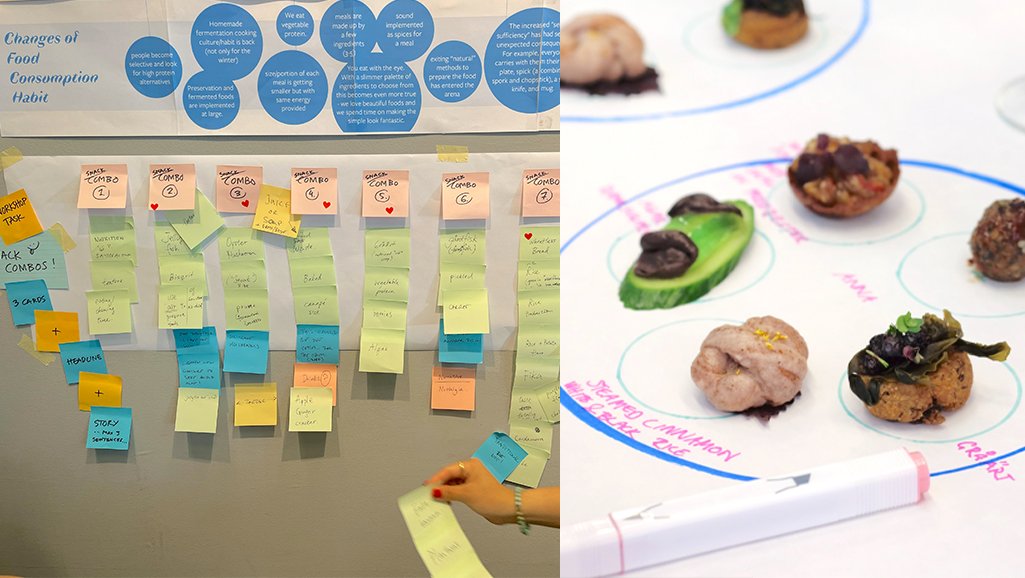

Harvest fest table and spire: A Jellyfish Festival Stand!
The jellyfish festival table celebrates jellyfish, once a nuisance but now a festival favorite in our fictive scenario. Each neighborhood during the festival showcases tables as communal nodes for meeting, eating, and enjoying urban food. The Harvest “pole,” reminiscent of traditional maypoles, adds a spiritual dimension, predicting weather and powering street lights with its colored solar panels. These panels, also enhancing food cathedrals, are not only aesthetically pleasing but also promote faster plant growth and flowering with their pink and blue hues.
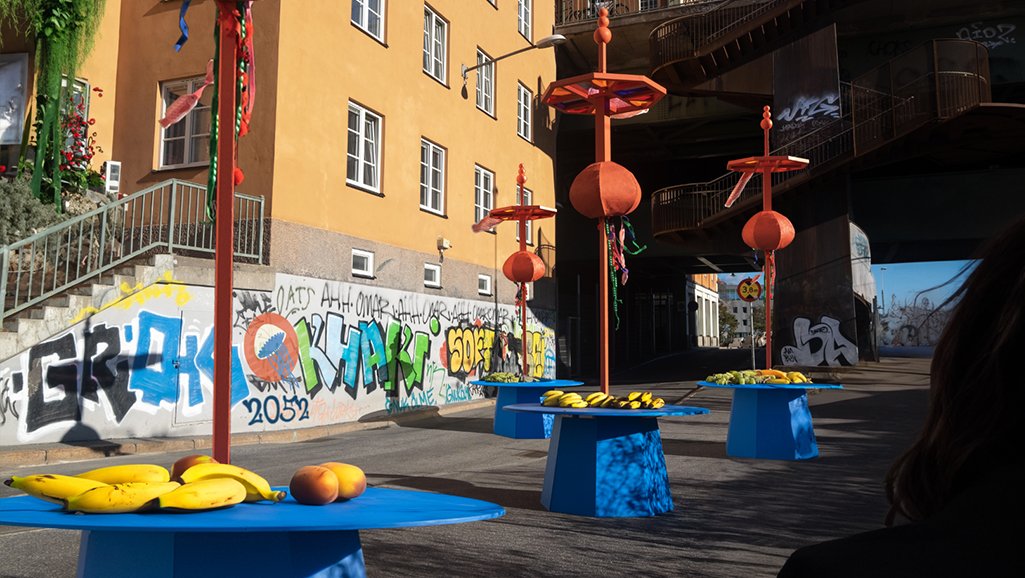

Festive decorations: The Basket of Abundance
The harvest festival is adorned with festive decorations like wind-moving garlands, symbolizing a celebration of food. These vibrant decorations draw inspiration from our future diets, overflowing picnic baskets, Asian lanterns, and Swedish folk crafts. At the pinnacle of the spire, a tulip-shaped wind tunnel celebrates the red nile fish, an African species ideal for land farming, emphasizing the festival’s innovative yet traditional spirit.
Time Capsule
The Harvest Festival celebrates 30 years! We made a time capsule as a token for the jubilee: “Because the skördefest celebrates 30 years!”. You will find the Scenario, the Timeline, an article about the Food Cathedral, the Blueprint and System Sketch, pins of “No to Insects for Protein”, Recipes of the future snacks. Through distributing these time capsule at the Harvest Festival to the citizens, we again aim to provoke dialogue on this topic.
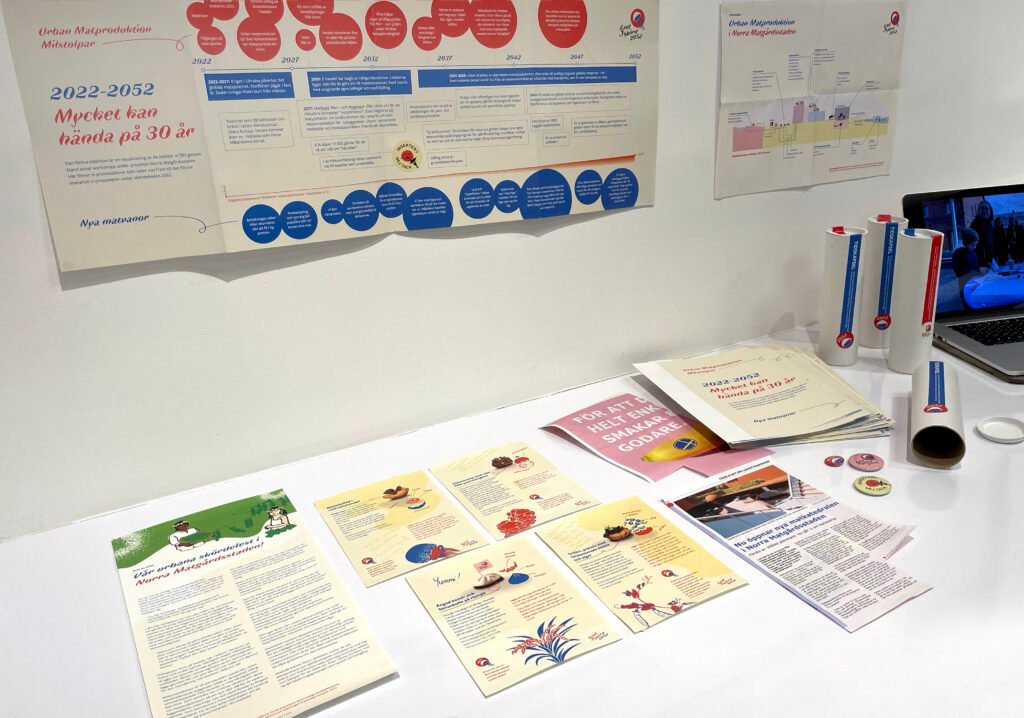

We have created the comprehensive identity design and a web page as documentation for the project. A survey was conducted during the event and to gathered what the citizens think.
“You cannot let this become an attempt that then falls into oblivion!”
“It was about time.”
“The food cathedral is a great idea, but I think you should change the name. The religious association can probably be disturbing for many.”
“Finally something less techy and more hands-on!”
“I am intrigued by the caves and microbes we could possible grow.”
